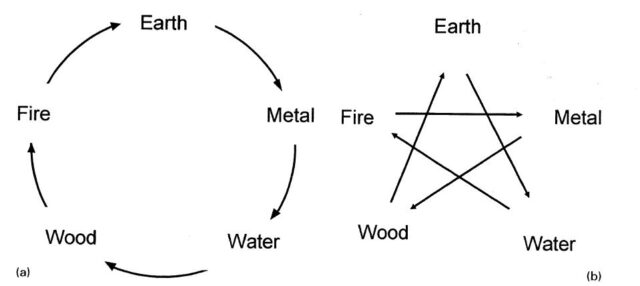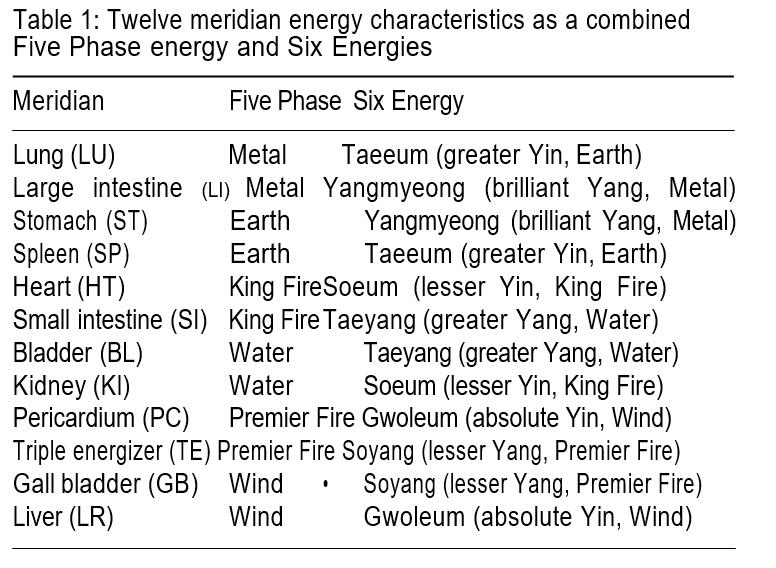- By ChangShik Yin*§, Hi-Joon Park+, Younbyoung Chae+, Eunyoung Hat+, Hun-Kuk Park+, Hyang-Sook Lee++, HyeongCyun Koh§, SungKeel Kang§; SunMi Choi=, YeonHee Ryu= and Hyejung Lee+.
- *Department of Acupuncture, CHA Biomedical Center, College of Medicine, Pochon CHA University, Seoul 135-081, Korea
- +TKM Research Group, Kyung Hee University, Seoul 130-701, Korea
- ++College of Oriental Medicine, Sangji University, Wonju 220-702, Korea
- §Department of Acupuncture, Kyung Hee Medical Center, Seoul 130-702, Korea
- =Department of Medical Research, Korea Institute of Oriental Medicine, Daejeon 305-811, Korea
-
Neurological Research, 2007, Volume 29, Supplement 1 S11
INTRODUCTION
Acupuncture inherits its origin from ancient East Asia and is one of the oldest healing arts. It is currently gaining wider acceptance among modern scientific groups1 . Expanding -interests in acupuncture are wel l reflected in the increasing number of articles published. The PubMed database had 282 acupuncture related articles in 1993, 294 in 1998 and 452 in 2003, and the number has been dramatically increased to 529 in 2004.
Ancient Korean and Chinese dynasties held close relationships, not only in politics but also in medicine, throughout the history. For example, the current version of Lingshu, the second half of the Huangdineijing, was transcribed from the book named The Bible of Acupuncture, which was brough! to the Song dynasty from the Korean dynasty in 10922. The Huangdineijing states that the healing stones, an ancient form of acupuncture, also came from the East, implicating thc1t acupuncture originated from eastern ancient China3 .
While maintaining a close relationship with China, Korea has continued to develop unique medicine of its own over the history and established different types of acupuncture methods from those of traditional Chinese medicine (TCM).
Korean acupuncture (KA) uses a summarized and individualized framework to explain biologic phenomena within the concept of constitutional medicine. Theories of KA are to simplify the understanding of the body’s core imbalances and enable practitioners to devise ,therapeutic strategies . that are based on constitutional energy traits. Saam acupuncture suggests 12 energy (or Qi) traits_ !hat underlie diverse superficial biologic phenomena4’5. These 12 energies are· mainly controlled by 12 corresponding meridian energies that determine the inclinations of the whole body. And it is these 12 energies that are targeted to recover the balance of the body’s energy system. Taegeuk acupuncture emphasizes therapies identified by Sasang medicine according to the patient’ s innate constitution6 Eight constitution acupuncture is based on the Jheoretical categories of eight succinct constitutions7. Both Sasang constitutional medicine and eight constitution acupuncture identify four or eight constitutions according to inherent discrepancies among major organ energies, all of which are considered to determine the physiologic characteristics of the individual and serve as a major-imbalance of diverse pathologic processes8 . These constitutional traits are considered as the source of individual differences in apparently similar physiologic or pathologic reactions.
New acupuncture methods that both simplify and enhance practical approaches have also been developed. The Korean hand acupuncture, for example, uses the newly developed meridian system that is intrinsic in both hands where the whole_body’s meridian system is reflected as homunculus-like9. Herbal acupuncture also integrates the benefits of herbal medicine and acupuncture attempting to elicit more efficient reactions within the body.
In this report, we will briefly review the acupuncture of traditional Korean medicine (TKM) to date focusing on its unique developments.
OVERVIEW OF KOREAN ACUPUNCTURE

Saam acupuncture
Saam acupuncture is a unique theory within KA and one of the most widely adopted techniques used by clinicians and educational institutions in Korea today. It originated in the 17th century from a Buddhist monk known as ‘Saam’, who provided basic acupuncture prescriptions for the imbalances of each of the 12 main energy traits by applying the Saeng (Sheng, ‘nourishing’) and Geuk (Ke, ‘suppressing’) cycle relationships of Five Phase theory (Figure 1) onto the five transport points and 12 meridians4’5. He summarized diverse physiologic or pathologic processes into 12 images of energy
imbaIance corresponding to the 12 meridians and expanded the use of five transport points. His manuscripts also carried clinical applications and modifications of these basic acupuncture prescriptions11. Saam acupuncture was further developed by Dr Hong Gyeong Kim in the 1980s, who provided more detailed interpretations and clinical applications of the concept of meridian energy,, and further suggested that meridian energy is essentially mental and emotional one12.

To achieve a comprehensive understanding of the energy controlled by meridians, both the Five Phase and Six Energy characteristics must be considered (Table 1). The characteristic energy controlled by the meridian is determined not only by the Five-Phase attributes, but also by the Six-Energy attributes. Six-Energies are the subdivision of Yin and Yang energies into three Yins and three Yangs, being Gwoleum Uueyin, ‘absolute Yin’), Soeum (Shaoyin, ‘lesser Yin’), Taeeum (Taiyin, ‘greater Yin’), Soyang (Shaoyang, ‘lesser Yang’), Yangmyeong (Yangming, ‘brilliant Yang’) and Taeyang (Taiyang, ‘greater Yang’), which correspond to the Six-Energies of Wind, King Fire, Earth, Premier Fire, Metal and Water respectively.
These Six · Energies are subdivided into 12 energies mainly controlled by 12 meridians that function as energy combined with the Five Phase energy in either upper or lower extremity meridians. For example, although both the gall bladder (GB) and liver (LR) meridian energies are Wood, GB energy is a Soyang while LR energy is a Gwoleum from the Six Energy perspective. The LR meridian energy is a Gwoleum combined with Wood, while the pericardium meridian energy is a Gwoleum combined with Fire (Premier Fire).
A typical diagnosis in Saam acupuncture is one of four imbalances of a meridian energy, deficiency, excess, cold or heat. A physician should first find out in which meridian energy the core imbalance is located, and then determine to which type the imbalance belongs. For instance, when the energy of Soyang, which is expressed as GB or triple energizer meridian energy, is excessive, it may be expressed as a dogmatic personality, sensitive mind or an inclination to give advice to others. When deficient, this energy may be expressed as an atrocious personality, cold mind or a sense of inferiority. More specifically, the energy of GB is associated with centering energy, bright light, aggressiveness, activeness, braveness, dignity or an arrogant attitude, an energy often compared to a wind power plant or a thunderbolt13 .
Each of the 12 meridians can be subdivided into four types, resulting in 48 basic pre-established acupuncture prescriptions, each of which are selections for five transport points. These five transport points equate to five acupuncture points distributed along the course of each meridian. Each transport point in turn corresponds to one of the Five Phases. Traditional use of the five transport points incorporates the ‘Saeng’ cycle relationship of the Five Phases where, for example, Wood nourishes Fire and Fire nourishes Earth. As an example, an energy deficiency of the heart (HT) meridian (i.e. Fire meridian) may be corrected by needling on the Wood acupoint (HT9) of the meridian with a tonification method, based on the above theoretical premise. In Saam acupuncture, acupoints are also selected using the ‘Geuk’ cycle relationship of the Five Phases where, for example, Water suppresses Fire and Fire suppresses Metal. To correct the example of Fire deficiency, the Water acupoint (HT3) of the Fire meridian should be sedated. Saam acupuncture practice would also simultaneously modulate other relative meridians selected by the theory of the ‘Saeng’ or ‘Geuk’ cycle relationships, which is necessary for whole-body balance. In the above example, the Wood acupoint of the relevant Wood meridian (LR1 ) should be needled using the tonification method, and the Water acupoint of the relevant Water meridian (Kl10) should be needled using the sedation method.
Saam acupuncture still lacks compelling evidence based on scientific research to effectively demonstrate the mechanisms and effects of this theory. One recent study, however, reported that treatment following Saam acupuncture theory produced a positive effect on the dysarthria symptom of stroke patients, which was more prominent than the effects noted from_ using body acupuncture common in KA and TCM14. It was also reported that acupuncture following Saam acupuncture treatment combined with conventiohal body acupuncture produced more pronounced results than those of body” acupuncture alone15.
- REFERENCES
1 NIH Consensus Conference. Acupuncture. JAMA 1998; 280: 1518-1524
2 Mayanagi M. The ‘Lingshu’ originated in the ‘Zhenjing’ owned by the Koryo government. } Soc Korean Med Hist 2003; 16: 147-156
3 Zhu M. The Medical Classic of the Yellow Emperor, Beijing: Foreign Language Press, 2001
4 Kim DH. The literary study on the written date of and the background of Sa-Ahm’s 5 element acupuncture method. MsD thesis, Kyungki: Graduated School of Kyungwon University, 1993
5 Yin CS, Park HJ, Chae Y, et al. Constitutionally individualized and practically integrated characteristics of Korean Acupuncture. KorJ Meridian Acu 2006; 23: 19-28
6 Lee BH. Research of the Tao of Acupuncture, Seoul: Haenglim Publishing, 1974
7 Kwon OW. A Study of Constitution-Acupuncture, Present at International Congress of Acupuncture, 1965, Tokyo, Japan
8 Lee JM. Dongeuisusebowon, Korea, 1894
9 Yoo TW. Koryo Hand Therapy-Korean Hand Acupuncture, Seoul: Eum Yang Mek Jin Publishing Co., 2001
1O Lee HJ. Principle ofHerbal Acupuncture and Clinical Application, Seoul: lljoongsa, 1999
11 Lee TH. Essentials of Saam’s Acupuncture Theory, Seoul: Haenglim Publishing, 1996
12 Baek JW. A Study on the Constructive Way through which Kim Hong Kyeong Interprets Meridian. MsD thesis, Kyungki: Graduated School of Kyungwon University, 2000
13 Kim HG. Handbook of Saam Acupuncture, Seoul: Shinnong baekcho Press, 1 992
14 Song MS, Kim YH, Jang SG, et al. Clinical comparison studies on 20 cases of stroke patients with dysarthria by Sa-Am and general acupuncture. J Kor Acu Mox Soc 2003; 20: 161-167
15 Kim JH, Park EJ, Park CH, et al. Comparison of the improvement of back pain and sciatica between common acupuncture treatment group and common acupuncture with Shin Jong Gyuk of Ohaeng acupuncture treatment Group. J KorAcu Mox Soc 2002; 19: 84선1




























![[꾸미기]AdobeStock_Alfred Wekelo](https://theacupuncturetimes.com/wp-content/uploads/2021/10/꾸미기AdobeStock_Alfred-Wekelo-696x462.jpeg)







